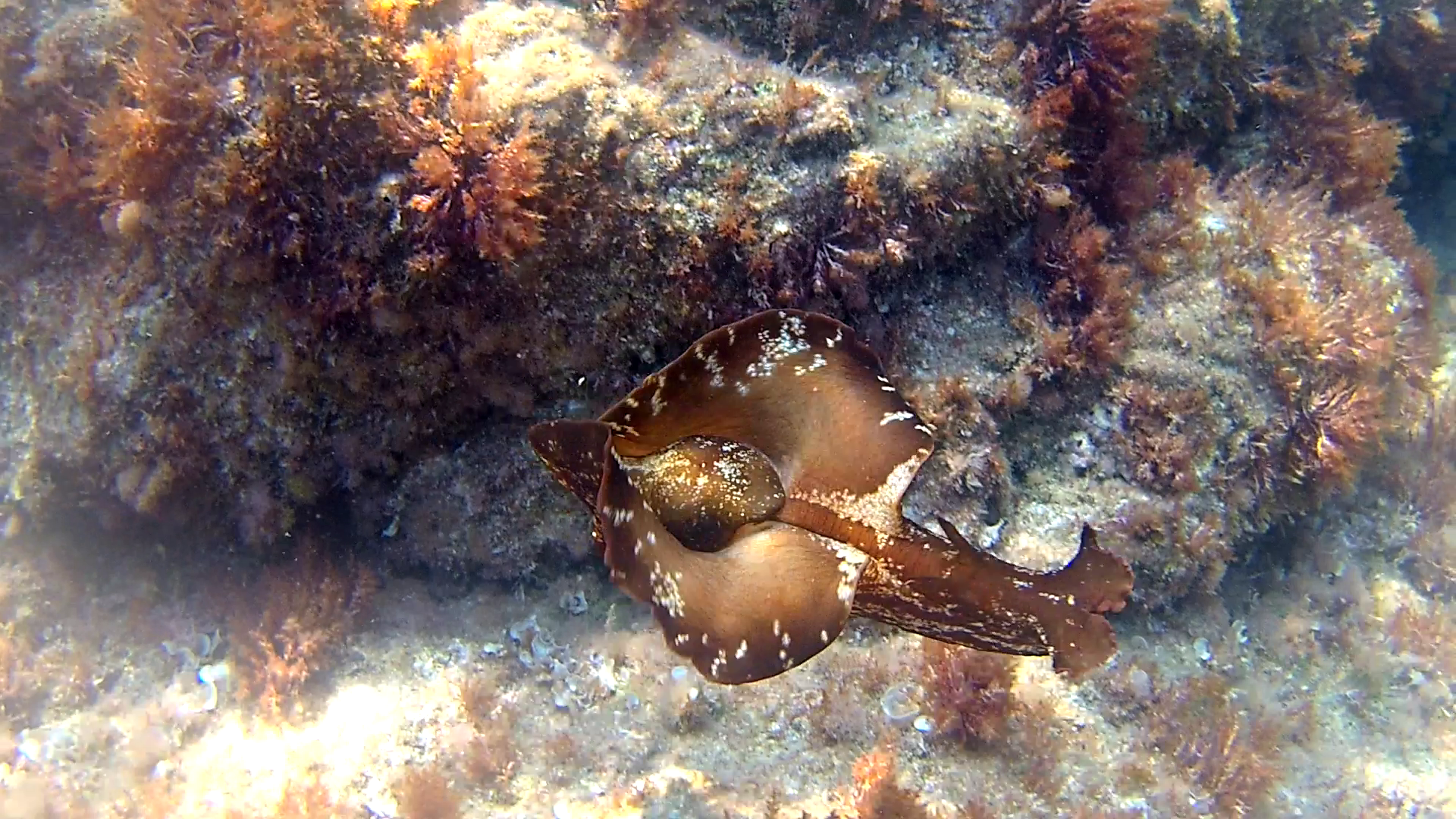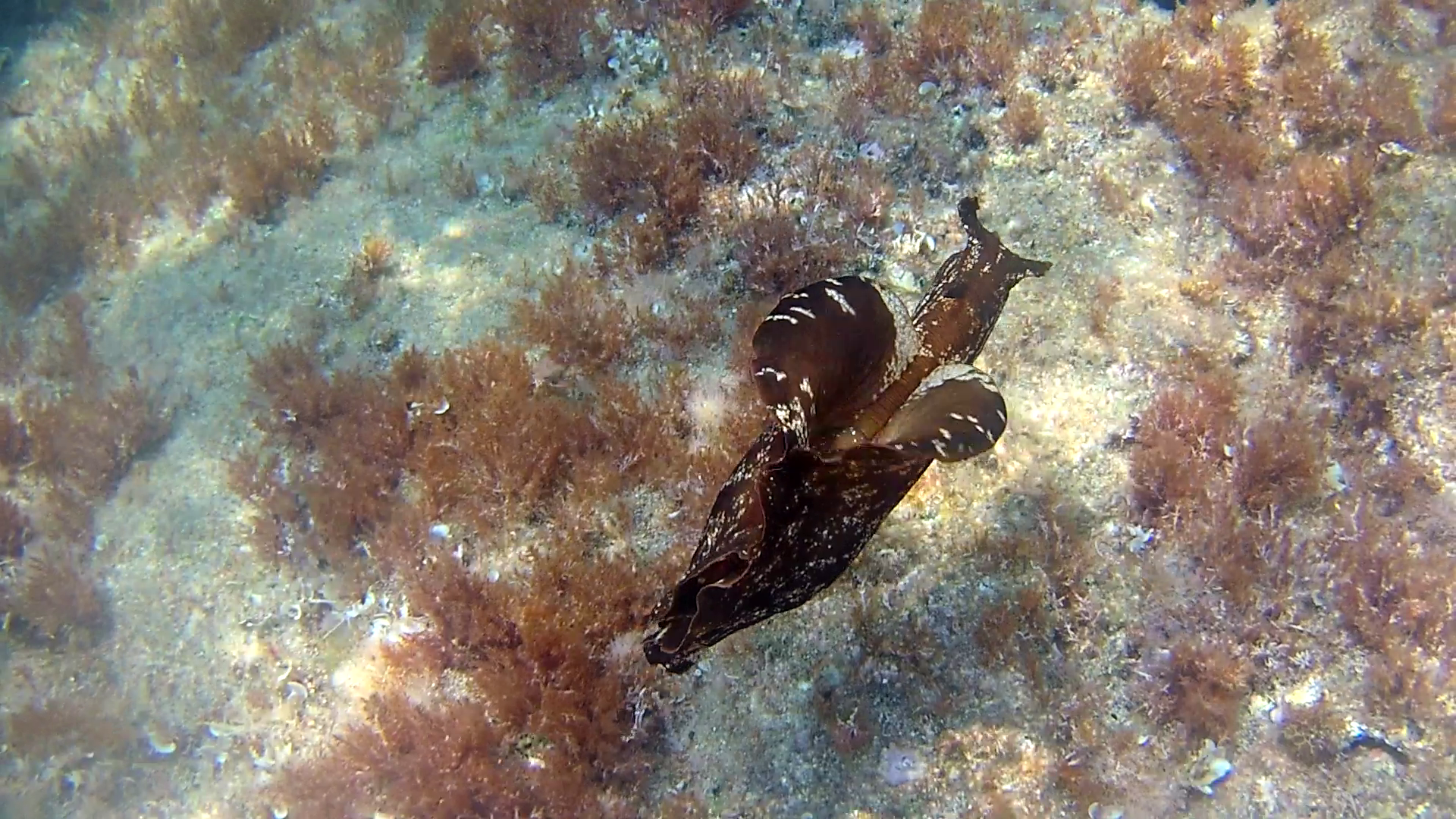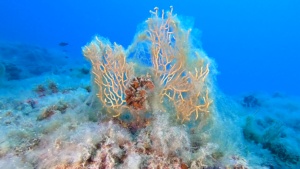In this video we can see a wonderful example of Spanish Mediterranean Dancer or Depilatory Sea Hare. It is a nudibranch mollusk, Aplysia depilans, that lives in the Mediterranean seabed at a depth ranging from 1 meter up to 10 meters. We met her in apnea in a rocky bottom around 2 meters. Sea hare, Spanish Mediterranean Dancer (Aplysia depilans Gmelin, 1791) also known as sea scia is an anaspidic mollusk of the Aplysiidae family. It is a mainly nocturnal shy animal and during the day it hides in rocky ravines or inside caves; for this reason his meeting with the diver is quite rare. It is the largest nudibranch mollusk in the Mediterranean, reaching 30 centimeters in length. The only nudibranch able to move in the water by swimming with its side fins making an elegant, sinuous and sensual movement as if she were a Spanish flamenco dancer. For this reason she is popularly known as the Spanish Dancer of the Mediterranean sea. lepre marina aplysia depilans

La Lepre Marina – Aplysia depilans – Ballerina Spagnola del Mediterraneo – Depilatory Sea Hare – intotheblue.it
Distribution and habitat: it comes from the areas rich in aquatic vegetation of the Mediterranean Sea and the east of the Atlantic Ocean. Description: species with very variable coloring, from light brown or reddish to almost black. It looks like a shapeless heap when it is collected on the bottom. If it is in a dorsal position it is possible to see its transparent shell which is very fragile. It reaches 30 cm.

La Lepre Marina – Aplysia depilans – Ballerina Spagnola del Mediterraneo – Depilatory Sea Hare – intotheblue.it
Biology: supply Although in ancient times it was thought to be a deadly animal for humans and fed on their flesh, it is a herbivorous species that feeds mostly on green algae (Ulva) and marine phanerogams (Zostera) . The feeding also affects the color of the animal. Reproduction: it is an insufficient hermaphroditic species, so it is necessary to have a partner to reproduce. The eggs are laid in such a way as to form characteristic orange cords, also called, because of their particular shape, sea spaghetti.
(extract from Wikipedia)
 English
English Italiano
Italiano



